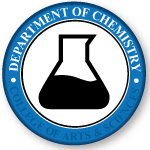Document Type
Article
Publication Date
2015
Publication Title
Journal of Cancer and Tumor International
Volume
2
Issue
2
First Page
50
Last Page
58
Abstract
Aims: To present 12 new variants of uracil mustard having drug-like properties and cytotoxic functional group, by utilizing uracil mustard (uramustine) as a lead compound. Utilize rigorous substructure and similarity of a molecular scaffold to determine drug like variants. Physicochemical properties determined indicate the variants have favorable drug-likeness.
Study Design: Conduct molecular database search utilizing features of substructure and similarity based upon uracil mustard. Place and Duration of Study: Department of Chemistry, Medicinal Chemistry Study Section, University of Nebraska at Omaha, Omaha Nebraska between January 2015 to March 2015.
Methodology: Uracil mustard consists of the pyrimidine derivative uracil, having the bifunctional nitrogen mustard cytotoxic moiety covalently bonded onto the ring. A systematic search, utilizing substructure component and similarity, within an in-silico database search successfully determined 12 variants. Rigorous criteria for drug-likeness was implemented to screen potential candidates
that included the application of the Rule of 5. In addition, maintaining the cytotoxic moiety of nitrogen mustard was crucial.
Results: A total of 12 variants of uracil mustard was identified after an extensive molecular database search using rigorous criteria. All 12 variants, and including uracil mustard, showed zero violations of the Rule of 5, thereby indicating favorable drug-likeness. Values of polar surface area for all compounds at less than 80 Angstroms2 are suitable for central nervous system penetration. Polar surface area, number of atoms, and Log P for all compounds increased as the molecular weight increases. Structure substituents include nitrogen mustard groups, hydroxyl, alkyl and carbonyl moieties. Cluster analysis discerned greatest similarity among members of this group.
Conclusion: Applying rigorous search criteria within a molecular data base, for comparison and reject, successfully identified 12 variants of uracil mustard that show favorable drug-likeness in addition to cytotoxic capability. The design of new antitumor agents is important for increasing efficacy of the clinical treatment of cancer.
Recommended Citation
Bartzatt, Ronald, "Potential Antineoplastic Structural Variations of Uracil Mustard (Uramustine) Retaining Cytotoxic Activity and Drug-likeness Suitable for Oral Administration" (2015). Chemistry Faculty Publications. 32.
https://digitalcommons.unomaha.edu/chemfacpub/32

